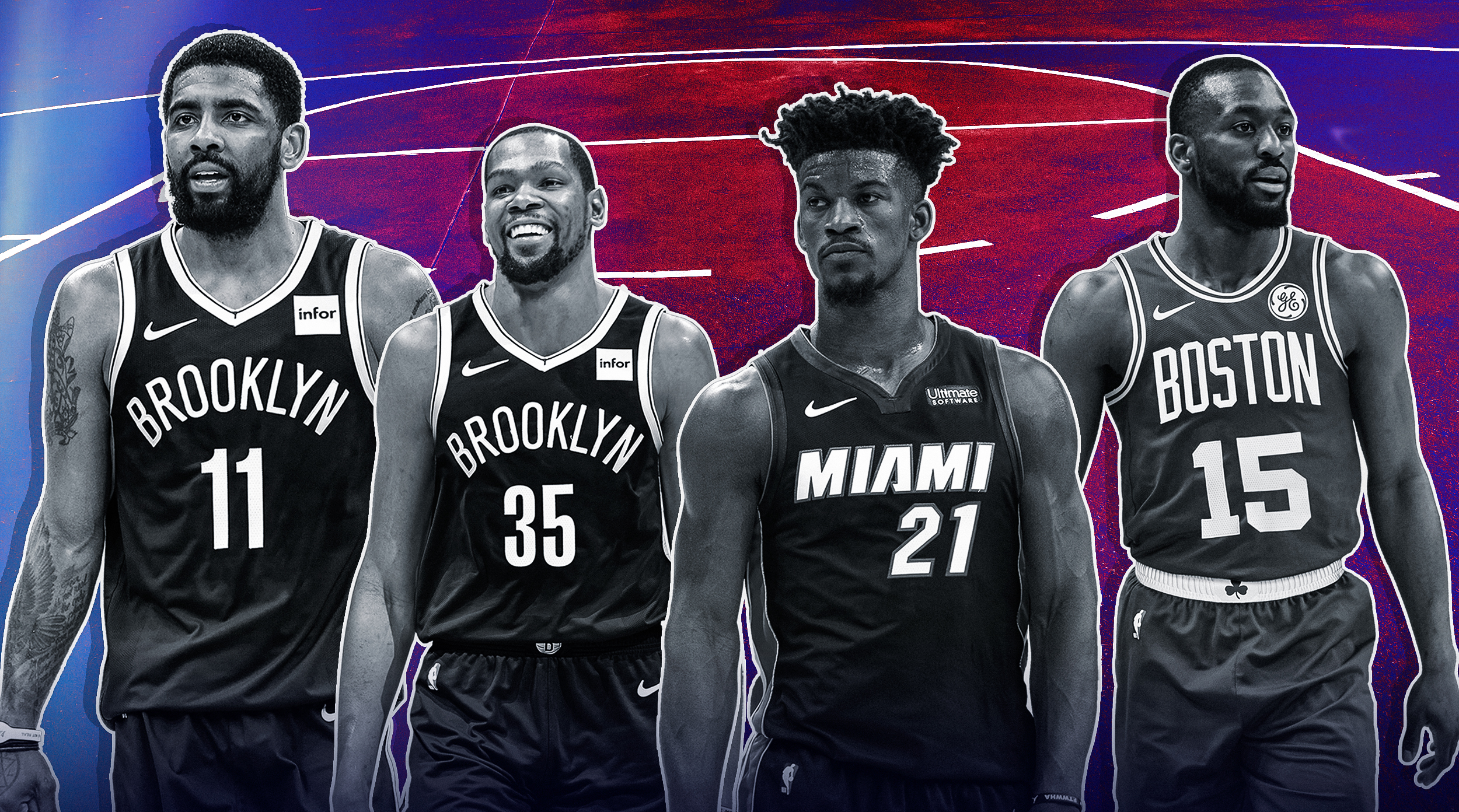EDITOR’S NOTE: This article was originally published in the Spring 2019 magazine.
The beginning of the National Basketball Association’s (NBA) free agency era was unceremonious. Following the expiration of his contract with the Seattle SuperSonics, forward Tom Chambers eschewed the normal re-signing process and, at the direction of then-NBA Players’ Union president Larry Fleisher, began fielding offers from the remaining 29 teams in the league. A new collective bargaining agreement, put in place during the offseason of 1988, gave Chambers the opportunity to become the first player to enter unrestricted free agency, eventually settling quietly on a four-year deal to join the Phoenix Suns, rather than re-signing with Seattle for less than his market value, as had previously been the norm. Later referred to as “cutting-edge stuff” by Chambers himself, the free agency model would lay the groundwork for a new era of player autonomy that quickly spread throughout the NBA universe.
Existing notions of player movement would again be flipped by LeBron James and The Decision. An hour-long television special in which James famously declared that he would “take his talents to South Beach and join the Miami Heat,” The Decision raised hundreds of thousands of dollars for charity (it was hosted by the Boys & Girls Club of Greenwich, Connecticut) and was almost as widely mocked as it was widely viewed by a massive television audience. Moreover, James would be joining fellow superstars Dwyane Wade and Chris Bosh in South Beach, instantly refocusing the league’s Archimedean point to American Airlines Arena in Miami.
Free agency in the post-Decision era was driven almost entirely by the LeBronian idea of a super-team, in which three superstars band together, find a competent supporting cast, and compete for an NBA championship during this brief window in which their host team can support three maximum salaries. James would go on to win two titles in Miami, before creating another super-team in Cleveland (alongside Kevin Love and Kyrie Irving) and tacking on another in 2016. Kevin Durant, another superstar in the league, left a promising core in Oklahoma City to attain guaranteed success for the Golden State Warriors, the team that LeBron and the Cavaliers defeated in the Finals that same year. The advent of the super-team era, like the beginning of free agency itself, would go on to have unintended consequences for the league and the players who inhabit it.
Emboldened by the movement of star players and motivated by the record-high contracts being signed as a result of the league’s revenue explosion in 2016, players began engaging in a new form of bargaining unofficially known as “pre-agency.” Here, players negotiate and maneuver their impending free agencies before the final year of their contract even arrives. Kawhi Leonard, the All-Star forward and former Defensive Player of the Year, employed this strategy while orchestrating his exit from the San Antonio Spurs. With over a year and a half remaining in his contract, Leonard informed the Spurs that he would not be re-signing and was intent on testing out the free agency market. He chose to sit out the remainder of the season to avoid injury and was acrimoniously traded to the Toronto Raptors that same offseason. While the deal worked out nicely for the Spurs (who received All-Star guard Demar Derozan in return rather than being left empty-handed after Leonard’s departure), the Raptors now have Leonard on their roster as a year-long “rental” before his contract expires at the end of this season.
The latest example of this phenomenon is superstar forward Anthony Davis. With his contract expiring at the end of the year, he gave his current team, the New Orleans Pelicans, the opportunity to trade him at the deadline and receive assets in return, rather than watch him walk in the offseason to sign a maximum deal elsewhere. Deals with their most likely trading partner, the Los Angeles Lakers (who had been not-so-subtly recruiting Davis for the past two seasons), fell through, and Davis is now playing on a minutes restriction for the remainder of his lost season. Regardless of where Davis ends up signing in the next offseason, however, the power he continues to exert over the Pelicans front office is virtually unprecedented in league history.
These changes in NBA personnel movement come after nearly 30 years of rapid social and economic change in the league. Following the 2015-16 season, the league’s salary cap grew to a record $94.1 million because of lucrative broadcasting deals and rising gate revenue. Players naturally wanted to take advantage of this explosion by signing lucrative deals of their own, such as middling point guard Tyler Johnson’s 2-year, $50 million deal with the Miami Heat. In addition to the financial incentives, the increasingly carceral role of social media forces players to field constant comparisons with not only their contemporaries, but also legends of the past. The reality of star players being judged primarily by their championships and MVP seasons incentivizes these athletes to snub outdated notions of team loyalty and pursue winning at all costs.
As the league continues to expand, both economically and geographically, previous developments in the realm of personnel movement ensure that players exert maximum control over their free agency outcomes, a luxury unique to the world of professional basketball.
